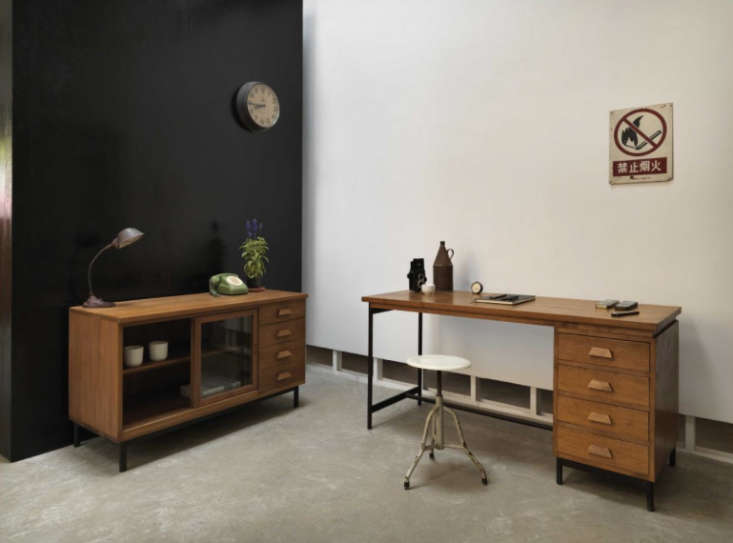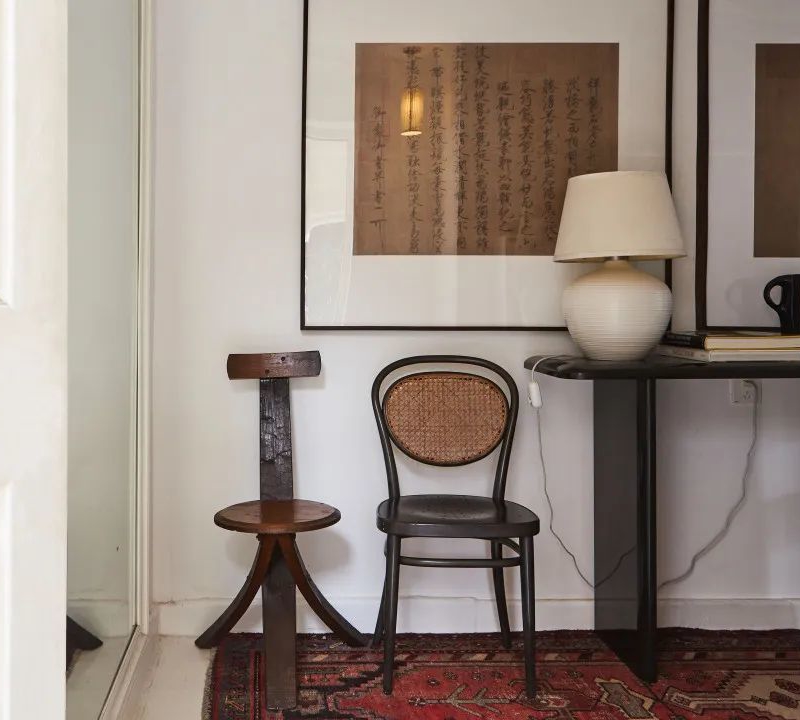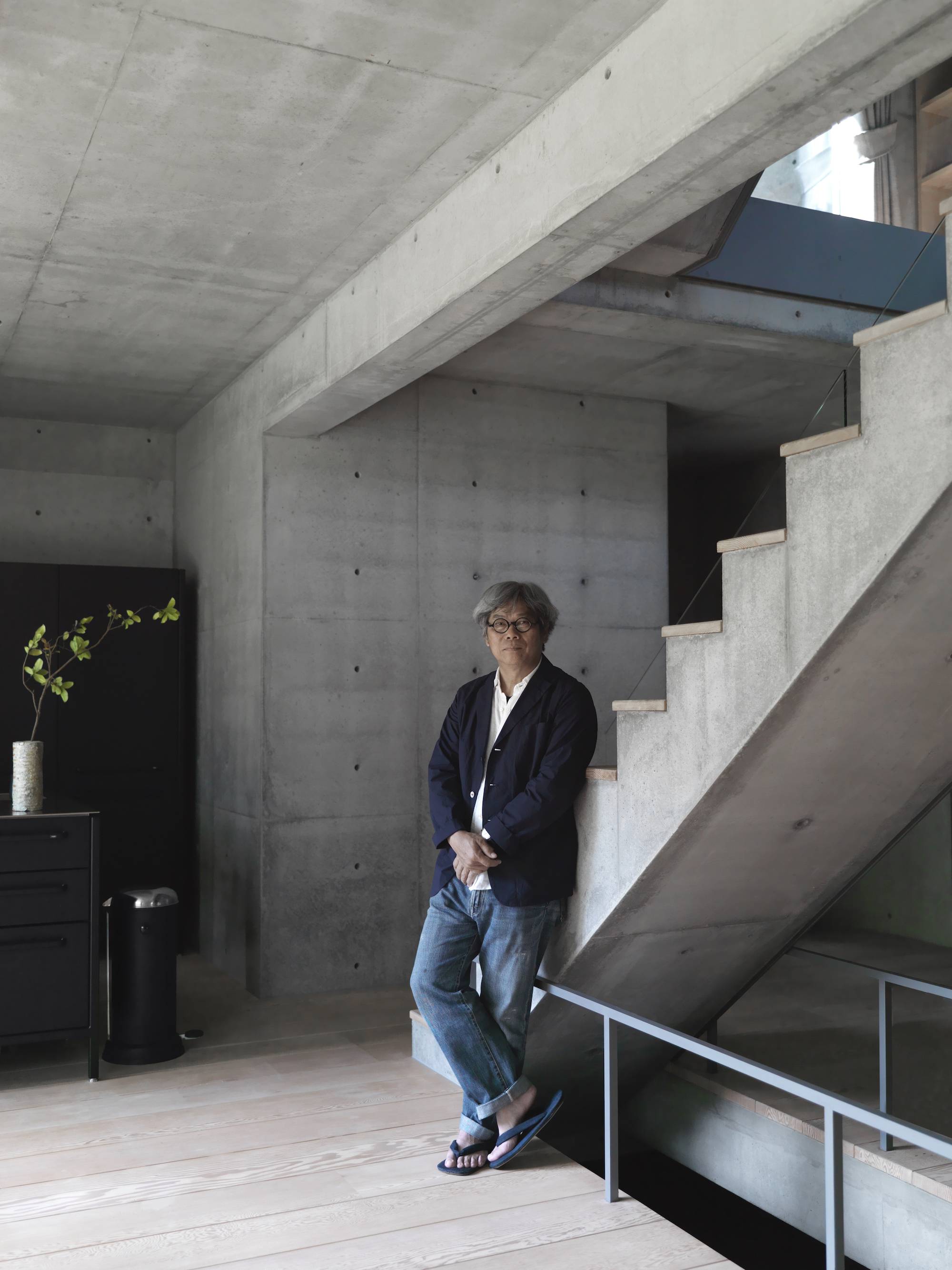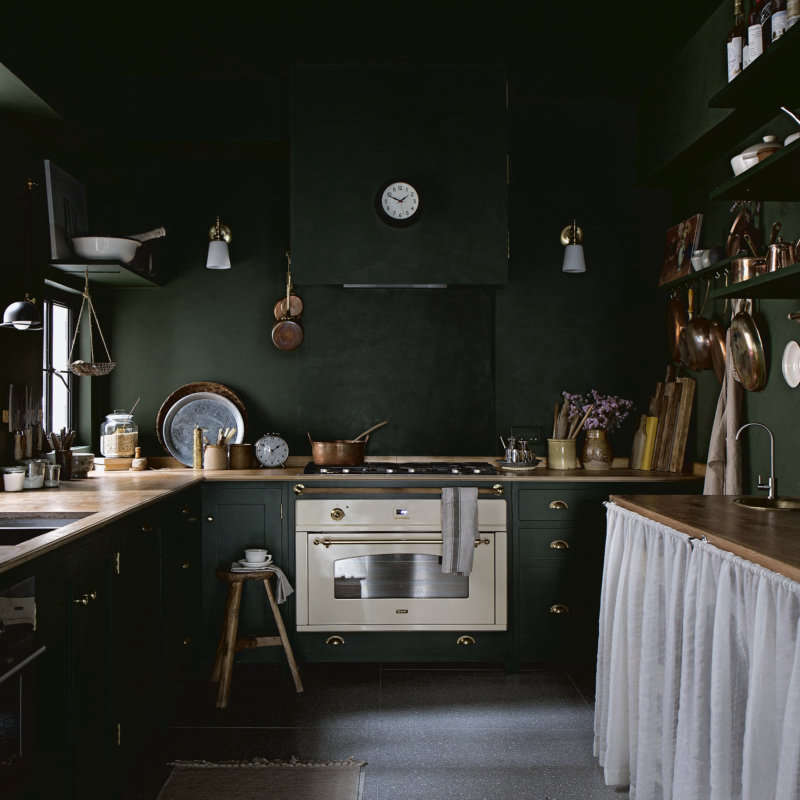A while back a reader sent in a tip about Lost & Found, a store in the Chaoyang district of Beijing owned by ex-pat American Paul Gelinas and local Xiao Mao. Since then, the pair has expanded their offerings (including a new line of clothing for men and women and housewares to come) and relaunched their website. While many Chinese embrace the modern furnishings at Ikea, Gelinas and Mao look for value in everyday pieces from the past, taking inspiration from classic midcentury Chinese designs and reproducing them locally as limited editions.
N.B. Summer House in Mill Valley, California carries select pieces from the line.

Above: Lost & Found is housed in a former dumpling shop on one of Beijing’s oldest streets.

Above: The building was renovated and redesigned by New Architecture Office, the collaborative office of Gelinas and colleague Phil Dunn.

Above: The Danish Chair and Footstool are both, as the designers say, “a Chinese knock-off of a Japanese knock-off of a Danish original. But like the photograph of a photocopy of a photocopy of a photocopy, the original details have long since dissolved, while the essential character has become more and more clear.” Priced at ¥4680 (about $773 USD).

Above: The shop’s layout is a series of living rooms on top of living rooms.

Above: Ceramic vessels by artist Mars Hsu of Sweet Object.

Above: Lost & Found Shop’s warehouse is home to limited edition collections and individual designs.

Above: The Angle-Iron Shelving is Lost & Found’s refined version of the industrial units seen in 1920s Chinese factories. Instead of the shoddy wood, this shelving is built with fine Chinese walnut on an iron frame.

Above: The Iron Pipe Chair was “all the rage in Shanghainese office design, circa 1970. Nowadays, you’re more likely to see one permanently parked on a sidewalk in Nanjing. We’ve brought the Iron Pipe Chair back. Lost & Found makes these one-by-one. Slowly. Interior frame constructed of elm; armrests carved from salvaged teak. Upholstered in our custom-woven corduroy or thrice-washed wool. These are our best-selling chairs.” Priced at ¥3200 (about $528 USD).

Above: Built by hand using raw steel and Chinese walnut, the Work Desk has a sleek midcentury vibe; ¥4800 (about $793 USD).

Above: Contractors working with Gelinas’ firm, New Architecture Office, to renovate the ancient building.

For more information, go to Lost & Found.
If you like the look of updated classic Chinese wooden furniture, have a look at our recent post, Bauhaus in Beijing. And for a standout craft furniture closer to home, see Color-Stained Furniture: The Next Big Thing?
N.B.: This post is an update; the original story ran on July 22, 2011 as part of our Cabin Living issue.




Have a Question or Comment About This Post?
Join the conversation (15)